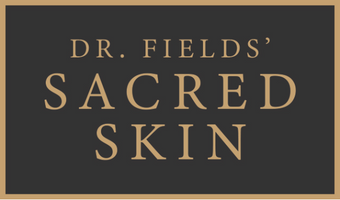The Essentials of Sun Protection for Your Skincare

Protecting Your Skin From the Sun
Few people are aware that about half of all cancers occur in the skin. That’s far more than any other part of the body. While most skin cancers are curable, they can cause disfiguration and expensive to treat. We have all heard that the primary risk of skin cancer is from sun exposure and sun damage. Aging is another primary culprit to affect the skin and other cancers.
I want to briefly discuss both risk factors and how we can assist our skin.
How Sun Damages the Skin
The sun’s ultraviolet rays are composed of two wavelengths known as UVA and UVB. Both could have deleterious and potentially lethal effects on human skin. UVA rays make up 90% of the injurious wavelengths. They produce free radicals that interact with skin cells to damage their membranes, corrupt their DNA, and interfere with the skin’s DNA repair mechanism. The more energetic UVB rays directly damage DNA, causing abnormalities that can trigger the first steps in skin cancer.
Ultraviolet light also destroys vital immune system cells that normally patrol the skin for abnormal and potentially cancerous cells.
Finally, UV light interferes with several processes that contribute to the regeneration and maintenance of the skin’s normal suppleness and elasticity, hastening the course of visible aging.
Choosing the Right Sun protection Approach
Knowing all this, it makes sense to apply a topical sunscreen daily. But we must be informed on which products are safe, what chemicals to use or avoid, and how we can internally assist our bodies with cellular repair.
Avoid All Chemicals in Sunscreen
Although they are approved by the FDA, many chemicals frequently used even in natural sunscreens are unsafe. These include 4-methyl-benzylidencamphor, oxbenzone, PABA, and homosalates. Chemicals like these have been linked in numerous studies to hormonal disruption, increasing the risk of breast cancer, uterine damage, and infertility.
I prefer sunscreens with microfine transparent zinc. This ingredient is proven to block UVA and UVB and its particles stay on the skin’s surface. Sofies’ Sol Protect from the Dr. Fields’ Sacred Skin line is an excellent choice, providing SPF protection without chemical toxicity or nanoparticles.
Avoid Nanoparticles in Sunscreen
The young science of nanotechnology creates nanoparticles which are defined as anything 100 nanometers or smaller. One nanometer measures one-billionth of a meter. Some particles are so small that it takes 80,000 of them to equal the width of a single strand of hair. The FDA is currently considering whether to regulate the use of nanoparticles in sunscreens. Currently, they are unregulated, and therefore there is no way of determining whether a sunscreen is using nanoparticles except for the trust in the company.
Nourish Your Body to Support Cellular Repair
Tomatoes and high-antioxidant foods help your skin repair sun damage. Lycopene, an antioxidant found in tomatoes, watermelon and pink grapefruit, appears to specifically provide skin protection. Glutathione is another strong antioxidant that seems to work on cellular repair and decrease the damage to the skin created by the sun and aging.
New interesting research is coming out about an extract from the polypodium leucotomos fern which has powerful, skin targeted antioxidant effects. These nutrients all help minimize the damage from the sun and aging and hence decrease your risk of skin cancer.
Dr. Fields’ Sun Care Recipe for Skin Protection
Use Sacred Sun, an all-natural sunscreen with transparent zinc and without nanoparticles.
Remember to reapply sunscreen every 2 hours.
Of course, wear a hat and appropriate clothing to protect yourself from burns.
Eat foods high in antioxidants such as tomatoes, or even dark chocolate and drink green tea to help your skin repair the damage from the sun and aging.
Consider other supplements such as glutathione 100-200mg a day or polypodium leucotomos 500-750mg a day to assist with the prevention of cellular damage that aging and the sun create.



